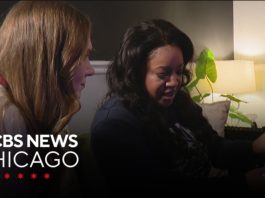Suspect in Charlie Kirk Shooting Silent with Authorities
The investigation into the shooting incident involving conservative commentator Charlie Kirk has taken a perplexing turn. According to Utah Governor Spencer Cox, the suspect in the case is not cooperating with law enforcement. This lack of engagement raises serious questions about the motives behind the attack and the subsequent legal proceedings. As authorities scramble to piece together the events leading up to the shooting, the suspect’s silence complicates the situation significantly.
Governor Cox expressed his concerns during a press briefing, emphasizing that “much more evidence and information” will emerge once formal charges are filed. This statement hints at the complexity of the case, which involves not just the shooting itself but a broader context of heightened tensions surrounding public figures like Kirk. The reluctance of the suspect to communicate could be a strategic move, possibly aimed at influencing the legal process or protecting themselves from self-incrimination. The legal ramifications of such a decision can be profound, with silence often interpreted in various ways by both the public and the courts.
The shooting incident, which has captured national attention, brings to light the increasing risks public figures face in today’s charged political environment. Kirk, known for his outspoken conservative views and activism, has been a polarizing figure, drawing both fervent supporters and fierce detractors. This situation is not unique to Kirk; it illustrates a broader trend where public discourse, particularly around political figures, can quickly spiral into violence. Advocates for free speech are increasingly concerned about the implications of such incidents, as they challenge the boundaries of activism and the safety of those who engage in public debate.
As investigations continue, authorities are likely to explore all available evidence, including eyewitness accounts, surveillance footage, and social media activity related to the suspect. The absence of cooperation from the individual in question not only prolongs the investigation but also leaves many unanswered questions about the motivations behind the shooting and the circumstances that led to it. In a world where information is power, the suspect’s refusal to engage with police could hinder a swift resolution, potentially allowing the narrative to be shaped by speculation rather than facts.
In cases like this, the media plays a crucial role in shaping public perception. Reports of the shooting have already sparked discussions about the safety of political figures, the role of rhetoric in fueling violence, and the legal frameworks surrounding such actions. As more details emerge, the public’s appetite for information will only grow. Media outlets will be under pressure to provide updates, but the challenge will be to report responsibly and without sensationalizing the incident.
The broader implications of this case cannot be overstated. It raises critical questions about the state of political dialogue in the country. Are we witnessing a dangerous escalation in hostility toward public figures? How can society navigate political differences without resorting to violence? The answers to these questions will have lasting impacts on the political landscape and the safety of individuals who choose to step into the public arena.
Questions
What impact could the suspect’s silence have on the investigation?
How does this incident reflect the current state of political discourse in America?
What steps are authorities taking to ensure safety for public figures like Charlie Kirk?



